2012 Colin W. Clark
All Rights Reserved.
No part of this publication may be reproduced, stored in a retrieval system, or transmitted, in any form or by any means, electronic, mechanical, photocopying, recording, or otherwise, without the written permission of the author.
First published by Dog Ear Publishing
4010 W. 86th Street, Ste H
Indianapolis, IN 46268
www.dogearpublishing.net
ISBN: 978-1-4575-1481-4
This paper is acid free and meets all ANSI standards for archival quality paper. Printed in the United States of America
Contents
Review problems
Acknowledgements
Special thanks are owing to my wife Janet, who set the book in type, using the mathematical typesetting program TeX. Getting all the equations, graphs and problem solutions in the right position was a mammoth undertaking.
My daughter Jennifer drew the cover picture. The rear-cover pboto was taken by Deborah Kieselbach.
Thanks also to colleagues who encouraged me to write and publish Math Overboard! including Marc Mangel, Michael Mesterton-Gibbons, Peter Rastall, Jim Zidek and Leah Keshet.
Colin Clark
July, 2012
How to use this book
Math Overboard will help you to raise your level of understanding of basic mathematics, from Arithmetic to Algebra, Geometry, Trigonometry and other topics. You are assumed to have studied these topics (or most of them) in school, but like many former math students you now realize that your understanding of elementary mathematics is not satisfactory. You need help, and this is it!
Math Overboard can be used in various ways. For example, you can look up a specific topic, or review an entire subject, or even review all of elementary math. If youre not sure where to begin, try the following:
Do the Diagnostic Test on . This will help to identify the areas you need to work on.
Read about Common Errors in Mathematics, . Understanding mathematics well enough to avoid these errors is essential for success in later math and science courses.
To decide whether you need to study a specific chapter, start by trying to solve the Review Problems at the end of the chapter. If you have difficulty with these problems, you clearly need to work through the chapter.
Math Overboard is based on the principle that to learn mathematics you must take the trouble to understand it. Many students get into the habit of trying to learn math by memorization alone. This is a sure recipe for disaster. Working with Math Overboard will help you to supplement memorization with understanding. The whole subject will begin to make sense. You will develop a new mental outlook, which will help you immensely in your future studies.
Let me mention one example, adding fractions:
My question is, how can you check whether this is correct? Try to answer this before reading on.
Here is the answer:
Are you already in the habit of using this check every time you combine fractions? It is easy to do, and will prevent many errors. Knowing how to do this implies that you understand cancellation, and also the logic behind adding fractions. Its a far cry from merely memorizing Eq. 1 above, with no clue as to why it is true. (See for detailed discussion.)
Another example: a math teacher recently asked me whether there was an easy explanation of the invert and multiply rule for dividing fractions. She said that she has to teach this method every year, but has no idea why it is true. None of the textbooks in the school library gave any explanation. Isnt that a sad story? Especially since the explanation is very simple, and only requires that you understand that division is the reverse operation to multiplication. Sure, students can be made to memorize the rule, but is that an education?
(This topic led to a big controversy in math education some years ago. Someone decided that students should understand that division means goes into. Kids should be taught to divide

by

for example, by answering the question How many times does

go into

This nonsense even got into textbooks. Believe it or not.)
Here are the main reasons why understanding mathematics is important:
Knowing why a given rule (or formula, or method) is valid is a big help in remembering that rule.
Knowing why things are true means that your mathematical knowledge hangs together and makes sense as a whole. As you study new topics, you see how they relate to what you already know.
Your confidence grows as you learn more mathematics, because you yourself understand the subject in detail. You do not have to rely on what your teacher tells you.
So how do you go about understanding math as you learn it? This is where Math Overboard comes to the rescue. Some of its main features are:
Frequent problems (with answers over the next page) allow you to test your understanding as your proceed. Be sure to work out these problems, using pen and paper. Do not look up the solution before you have tried hard to solve the problem.
Complete, easy-to-follow explanations are provided for every topic. Read each explanation carefully, and make sure that you understand each step. Then put the book down and repeat the explanation for yourself.
Advice on how to learn mathematics occurs throughout the book. If you want to read this advice by itself, look up mathematicslearning/understanding in the index.
The index can be one of your main aids to learning. Use it frequently to chase down any term or topic that you are not absolutely clear about. Each index entry leads you directly to the main presentation of that topic.
Let me offer one bit of advice right now. Before starting to use Math Overboard , buy yourself a dedicated math notebook. Whenever you read a section of the book, start making notes. List the section heading and page number. Next, write down each major point as you encounter it. Write out (carefully!) the solution of each Problem. If you had trouble, make a note of that, and if possible explain where you went wrong.
The notebook will become a permanent record of your endeavors. Would it not be a good idea to write it using a pen? I myself never do math with a pencil! Pencil writing encourages sloppiness, and shows a lack of confidence. If you make a mistake, put a line through it you might discover later that it wasnt a mistake after all.
Math Overboard includes many applications of elementary mathematics to actual situations in Science, Business and Economics, and many other areas. Study these applications not only for their own interest, but also to assist your learning process. Knowing how a certain math topic is used in practice, is part of understanding that topic. For example, learning about musical scales can help you to understand trigonometric functions (Part 2).


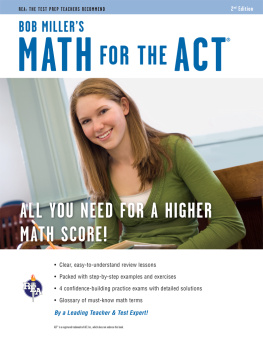
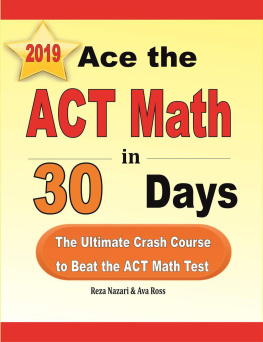
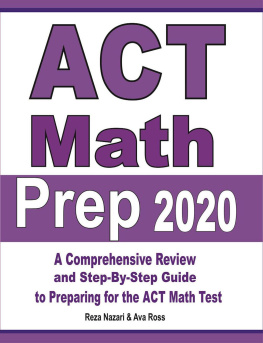
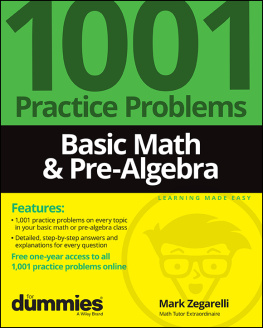
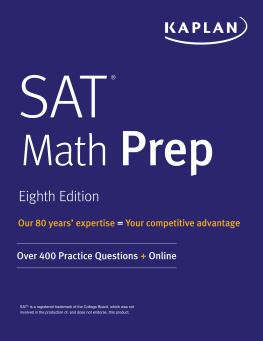
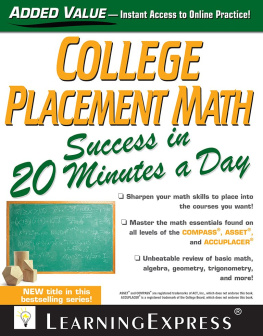
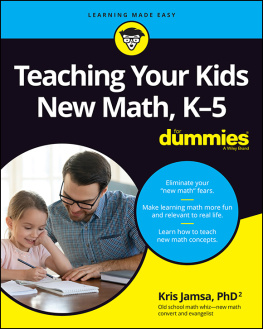
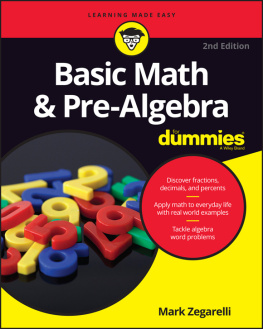
![Debra Anne Ross [Debra Anne Ross] - Master Math: Basic Math and Pre-Algebra](/uploads/posts/book/119083/thumbs/debra-anne-ross-debra-anne-ross-master-math.jpg)
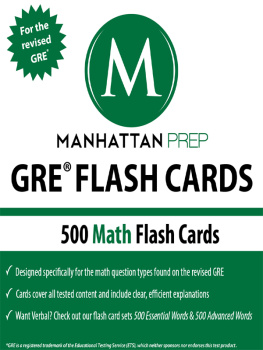
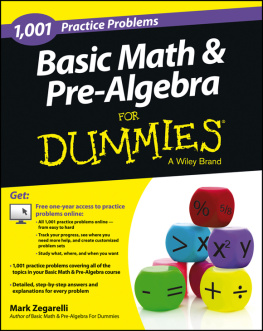





 by
by  for example, by answering the question How many times does
for example, by answering the question How many times does  go into
go into  This nonsense even got into textbooks. Believe it or not.)
This nonsense even got into textbooks. Believe it or not.)